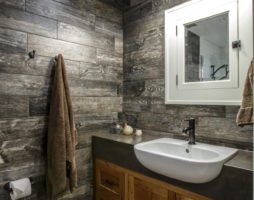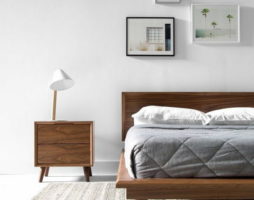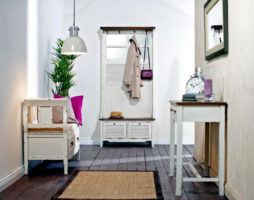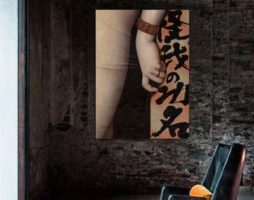Properly selected glue for furniture significantly extends the life of the headset or its individual elements.
With this tool, you can restore damaged parts, improve the appearance, restore the former functionality of the cabinet, sofa, etc. In addition, the adhesive must meet the following requirements:
- strength, reliability - after all, the duration of operation depends on this;
- safety - complete absence (especially trichloroethane) or minimal content of toxic substances;
- durability - the dried adhesive layer must retain its structure, not dry out, not crumble under the influence of external factors (temperature, humidity).
Another important parameter when buying an adhesive is its cost. For small jobs, you can purchase a more expensive option. However, high cost is not always a guarantee of adequate quality. In this case, it is better to pay attention to the properties of the product, to choose the composition that is best suited for a particular material.
back to index ↑Varieties

quick-drying adhesive bonds wood surfaces instantly
There are several types of adhesive mixtures, which differ depending on the purpose. Each of them has high drying strength. A certain type of adhesive is selected, as a rule, by composition. Distinguish:
- Water-based glue (animal, PVA). The tool reliably fixes fabric surfaces, foam rubber, varieties of non-woven fibers.
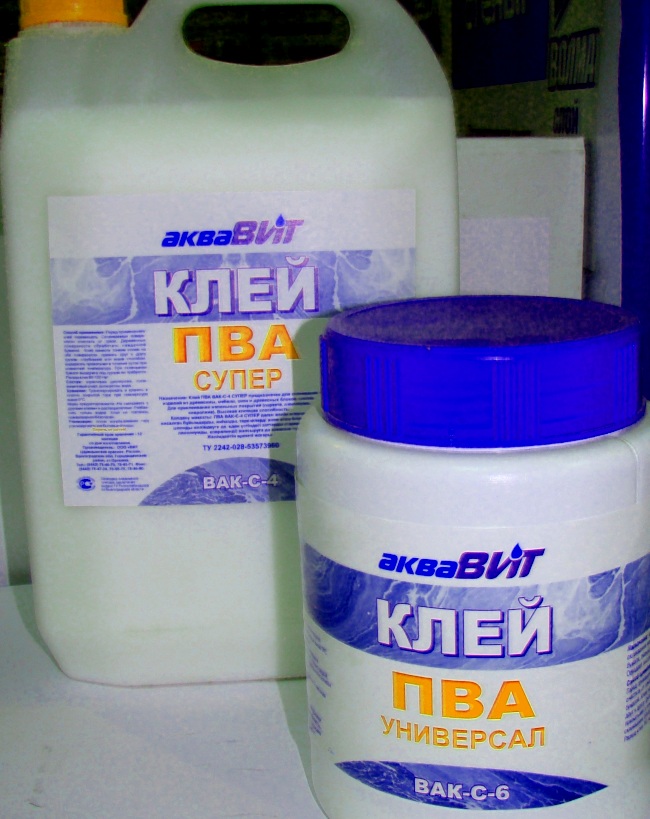
PVA glue is perfect for gluing foam rubber
When working with this type of material, you can not use any other type of adhesives, except for PVA. They can be not only ineffective, but also capable of damaging the surface. For example, liquid super glue instantly corrodes the fabric base.
- Universal option - PVA, hot melt adhesive. Provided the correct bonding technology is used, it ensures the strength of fixation for a long time.
- Joiner's glue for furniture (resorptive). The base contains aliphatic resins. It is used for gluing wooden surfaces, including outdoor furniture.
- Contact furniture adhesive (based on synthetic rubber, hot-melt adhesive, high-strength PVA). It is used in the repair and restoration work with home, outdoor furniture. It seizes quickly, but you can use the item for its intended purpose after a day.
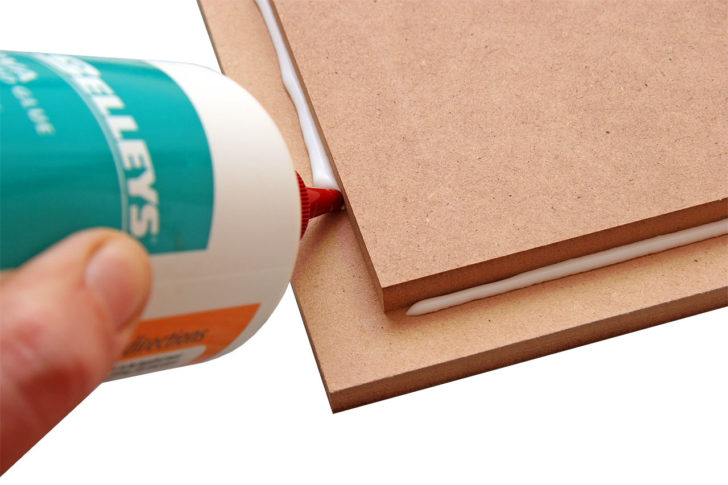
uniform adhesive application on PVC sheet
According to the principle of hardening, all adhesives for furniture are divided into groups:
- quick-drying (drying) - it is enough to leave the glued elements in the air (PVA), they will firmly stick to each other;
- thermoplastic (hot melt adhesive) - produced in the form of cartridges, granules, blocks, rods, activation of fixing properties requires exposure to temperature (the composition passes from a solid state to a liquid state);
- thermosetting (BF) - the adhesive seam is formed when the composition hardens under the influence of elevated temperatures.
The last group of furniture adhesives according to the number of ingredients are divided into:
- one-component - sold ready-made;
- multicomponent - as a rule, they are mixed immediately before application.
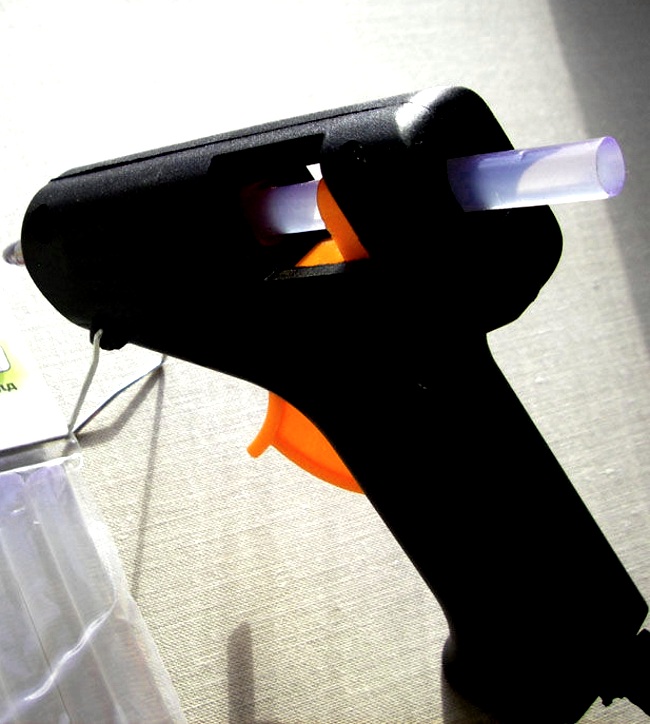
thermoplastic adhesive
Based on the origin of the main ingredient, there is:
- organic;
- organoelement;
- inorganic adhesive mixture.
Depending on the form of release, the following types of adhesive compositions are presented on the building materials market:
- liquid;
- dry;
- solid.
back to index ↑Furniture adhesive containing a solvent (cyclohexane, acetone, hydrocarbon compounds, etc.) quickly hardens due to the evaporation of volatile substances. Water-based products require a longer bonding time.
Properties
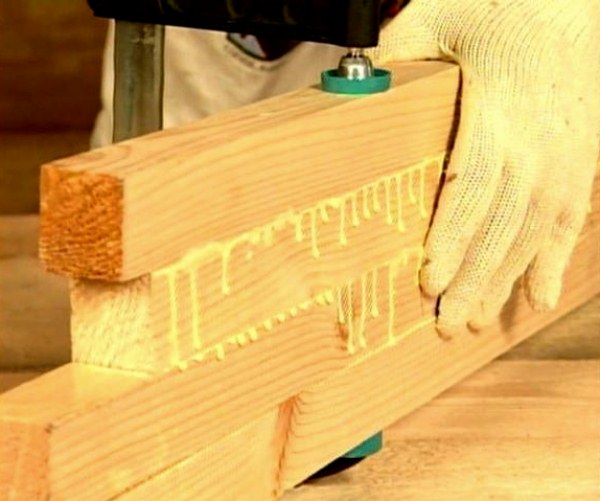
for tight gluing of the surfaces of the bars, they are clamped with a clamp
To ensure maximum strength, reliability of joints, the adhesive seam must be made with an agent with an optimal composition. Ingredients should be selected taking into account the following parameters:
- resistance to temperature stress (use of objects outdoors under the open sun, near heating appliances, gas, electric stoves);
- strength under weight load (seats of sofas, chairs, table legs, shelves in cabinets, other elements that can withstand the weight of objects);
- vibration resistance - furniture located in close proximity to washing machines, generators, other working equipment;
- resistance to chemical attack - refers to those elements that are supposed to be washed frequently with household chemicals (kitchen, bath, toilet).
Technical parameters of thermoplastic adhesives for furniture:
- melting temperature value - within 80-100 O WITH;
- working temperature of hot melt adhesive is 120-200 O WITH;
- hardening period - from 5 to 40 seconds, depending on the composition.
Hot melt adhesive does not contain active (highly volatile) solvents. To firmly fix the surfaces, they must be pressed against each other, hold for some time (until the primary solidification of the adhesive joint). Reliability of pasting is provided with the resins which are a part, rosin, synthetic rubber. Some options contain a small amount of volatile solvents, which reduces the setting time of the mixture.
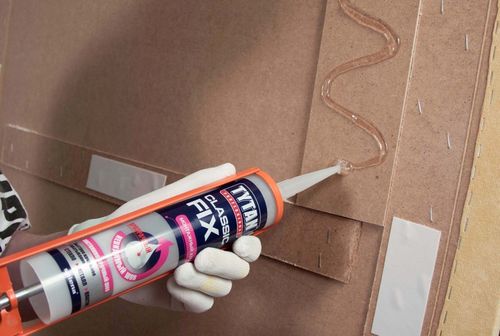
liquid glue in tubes for gluing fiberboard surfaces
Durable water-based adhesives sometimes require the treated surfaces to be placed under a press. This provides better bonding of the layers, increases the reliability of the adhesive seam.
The quality of bonding depends not only on the properties of the adhesive, but also on the correct preparation of the surface.
For example, porous materials such as plywood, wood, chipboard must be pre-dried and cleaned. A high percentage of moisture can increase the setting period of the furniture adhesive, reduce the strength of the adhesive joint.
back to index ↑Application
Glue for furniture must be selected not only taking into account the type of material to be glued, the load exerted, and external conditions. Do not forget about the ease of application.

applying adhesive to plywood boards
- Hot melt adhesive will fix furniture edges (PVC, melamine, etc.). It is applied with a gun, inside which the adhesive composition is melted to a liquid state.
- Animal glue, which is undeservedly considered an outdated option, can be used when gluing plywood. The inconvenience of use lies in the fact that the granules must be dissolved in water at a high temperature (in a glue cooker). The resulting seam can be melted down, fasten the plywood with it again after many years.
- Contact types of adhesives for furniture on a polymer (rubber, styrene-butadiene) basis are the best option for restoration work with upholstery, fabric base joints, wood, leather, and plastic parts. The adhesive seam is sufficiently elastic, resistant to temperature and humidity.
- A subspecies of contact furniture adhesives is acrylic, which is based on latex.Environmental friendliness, high strength characteristics of this product make it possible to use it to work with children's furniture made of wood, plastic, chipboard, and other materials.
- PVA furniture glue (Luxe type) is designed for gluing chipboard, veneer, pressed cardboard, laminate, plywood, wood. Forms a strong film of increased elasticity.
- Epoxy (two-component) is a universal option for fixing any surfaces. It can be used to fill cracks and gaps.
- Rubber glue for furniture (brand 4010) is the best option for attaching metal, wood, fabric, rubberized fragments to the base. Possesses the increased elasticity, resistance to external influence.
- BF (phenolic butyral), Rapid 100 are used for fixing the foam layer to the surface.
With the development of the chemical industry, the range and variety of adhesive mixtures is increasing. At the same time, the quality of popular and widely used furniture adhesives used for restoration and repair is improving.
back to index ↑Selection Guide
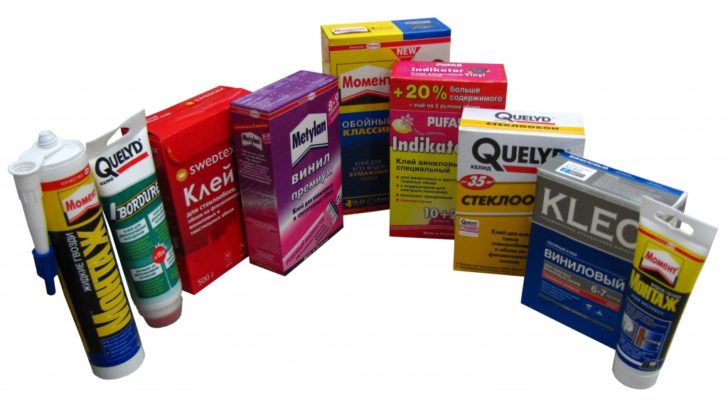
when choosing glue for furniture, you should pay attention to the expiration date
When buying adhesives for furniture, preference should be given to those options that meet the following requirements:
- Normal expiration date. The strength characteristics of the mixture largely depend on the conditions and duration of storage.
- Eco-friendly composition. When working with wood-shaving materials, it is better to avoid products containing caustic solvents, toxic resins. Such ingredients can hold the surface well, but at the same time damage the base of the structure. Toxic compositions are not recommended for use in bedrooms, children's rooms, since the release of harmful substances from furniture adhesives can be hazardous to health.
- The density of the mixture is not less than 1.1 g / cm3. It is optimal to choose a composition of medium density so that it is convenient to apply.
The setting time of the agent depends on the density index.
A low value can cause rapid drying and absorption of liquid into the base material. As a result, the surfaces may not stick together. High density requires fast application, longer setting time.
- Color. In order not to spoil the appearance of the furniture, it is necessary to choose a glue of a shade close to the tone of the structure. Universal solution - colorless, transparent composition. When processing joints, edges, its remains must be removed immediately.
When inspecting the packaging, you need to pay attention to the manufacturer's recommendations for use on specific surfaces, types of materials. Following the instructions will help to avoid damage to the layers of furniture in the process of restoration, restoration.

